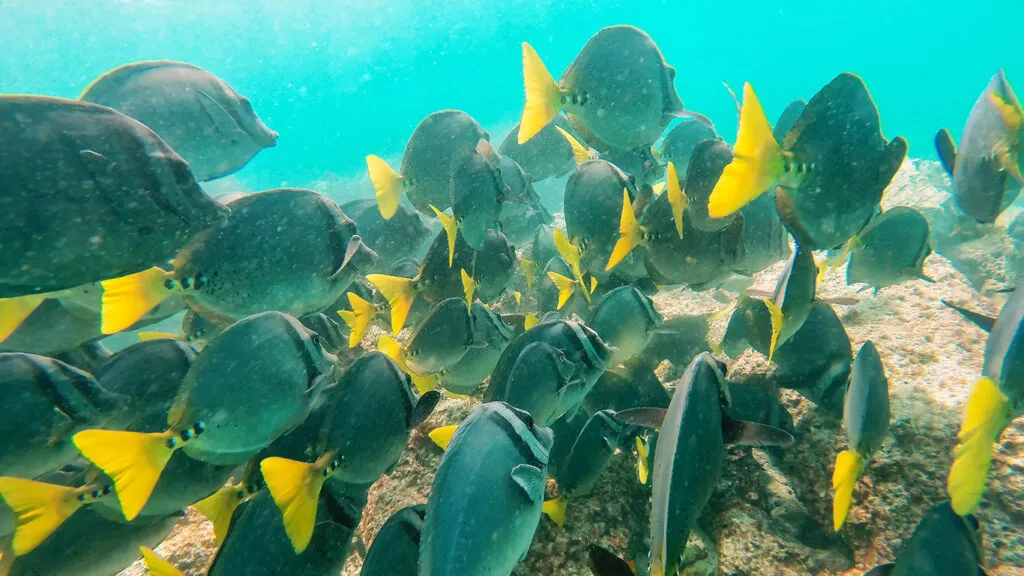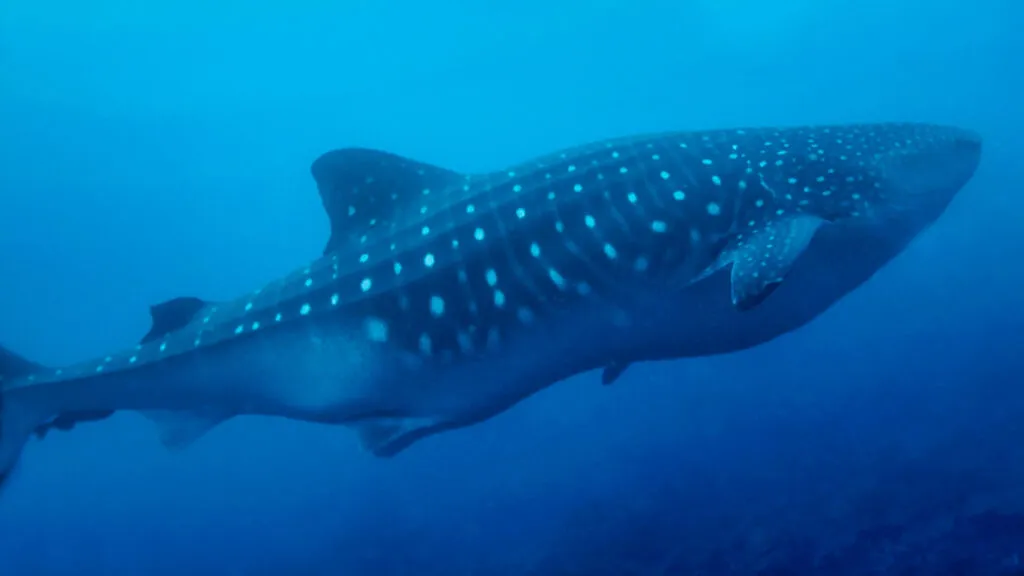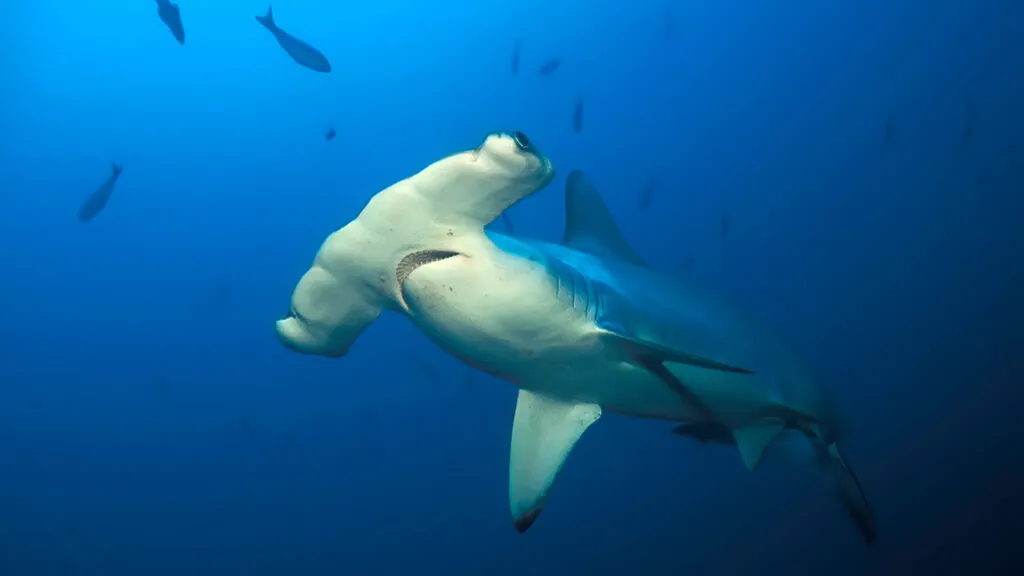The Galapagos Islands, a volcanic archipelago located in the Pacific Ocean, are recognized worldwide by their biodiversity and their crucial role in the theory of the evolution of Charles Darwin. This destination not only attracts biologists and naturalists, but also diving enthusiasts who seek to explore their crystalline and rich waters in marine life. Diving in the Galapagos is an experience that goes beyond simple observation; It is an immersion in a unique ecosystem where the interaction between species is palpable and fascinating.
The diving in these islands offers the opportunity to swim with creatures that are not found anywhere else on the planet. From hammer sharks to giant turtles, each immersion is an adventure that promises unforgettable encounters. The combination of ocean currents, underwater formations and a rich biodiversity makes the Galapagos a world -class diving destination, attracting both beginners and experienced divers.
Highlights
- The Galapagos Islands offer a unique diving experience thanks to their diverse marine life and their impressive underwater landscapes.
- The outstanding diving sites include Gordon Rocks, Kicker Rock, Darwin and Wolf, where it is possible to see sharks, manta, sea turtles and a wide variety of tropical fish.
- When diving in the Galapagos Islands it is important to follow the marine conservation regulations to protect the fragile archipelago ecosystem.
- Planning a diving trip to the Galapagos Islands requires considering the best time to see different marine species, such as whale sharks and hammers.
- Marine conservation in the Galapagos Islands is crucial to preserve the unique biodiversity of the region and guarantee its enjoyment for future generations.
The unique marine life of the Galapagos Islands
Marine life in the Galapagos Islands is extraordinarily diverse and is composed of endemic species that have evolved in isolation for millions of years. Among the most emblematic inhabitants are the hammer sharks, which are grouped into large numbers at certain times of the year, creating an impressive show for the divers. In addition, whale blankets and sharks are also frequent visitors, adding an additional level of emotion to each immersion.
The nutrient rich waters surrounding the islands are the home of a variety of marine ecosystems, from coral reef to rock funds. The divers can expect to see a wide range of life, including playful marine lions, colorful tropical and majestic sea turtles. The interaction between these species is a constant reminder of the complexity and beauty of underwater life, making each dive a lesson on marine ecology.
The best diving sites in the Galapagos Islands

Among the most prominent diving sites is Wolf Island, famous for its abundant hammer sharks and impressive biodiversity. This remote place is ideal for experienced divers, since currents can be strong, but rewards are unmatched. Another remarkable site is Darwin Island, where you can see large fish banks, as well as whale sharks during certain seasons.
The visibility in these waters can reach up to 30 meters, which allows to fully enjoy the submarine show. You can't talk about diving in the Galapagos without mentioning the famous "Kicker Rock" site. This rock formation offers a spectacular environment for diving, with vertical walls that descend at considerable depths.
Here, divers can find a mixture of marine life, from vibrant fish to sharks and stripes. The experience of diving around Kicker Rock is unique, since underwater topography creates a dynamic and exciting atmosphere.
Tips for diving in the Galapagos Islands
Before immersing yourself in the galapagueñas waters, it is essential to be prepared. An essential advice is to make sure you have the appropriate certification for the diving level to be performed. Many tour operators offer courses and guides for beginners, but it is advisable to have at least a basic certification to fully enjoy experience.
In addition, it is important to be aware of sea conditions and currents, since they can vary significantly between the different diving sites. Another aspect to consider is the team. Although many diving centers offer equipment rental, carrying your own team may be more comfortable and ensure that it is in good condition.
In addition, do not forget to protect yourself from the sun; The use of neoprene suits not only helps regulate body temperature, but also provides protection against the harmful UV rays. Finally, it always follows the instructions of your guide and respect marine life; This not only guarantees your safety, but also contributes to the conservation of the ecosystem.
The importance of marine conservation in the Galapagos Islands
Marine conservation in the Galapagos Islands is a critical issue due to the fragility of the ecosystem and the pressure faced by tourism and fishing. Local authorities have implemented various measures to protect the unique biodiversity of the archipelago. For example, protected marine areas have been established where commercial fishing is prohibited and access to certain tourist activities is limited.
These initiatives are essential to preserve the natural habitat of many species and ensure that future generations can enjoy this natural treasure. In addition, educational programs on conservation are fundamental to raise awareness among visitors and residents about the importance of protecting the marine environment. The divers have a crucial role in this effort; When choosing responsible tourist operators and participating in conservation activities, they can contribute directly to the protection of the ecosystem.
Responsible observation and respect for established norms are important steps to ensure that the natural beauty of galapagos endures.
Unique diving experiences in the Galapagos Islands

Encounters with playful marine lions
One of the most memorable is to swim with playful marine lions that seem to enjoy both water and divers themselves. These marine mammals are curious, they often approach to play, creating magical moments under water.
Hammer shark sighting

Another outstanding experience is hammer sharks sighting in their natural habitats. These impressive predators are a symbol of the ocean and their presence is a reminder of the ecological balance that exists in these waters. The feeling of floating with them is indescribable; It is a mixture of astonishment and respect for the majesty of nature.
Encounters with sea turtles
In addition, meetings with sea turtles are equally exciting; Observing how they swim gracefully among the corals is an experience that leaves a lasting mark in the heart of any diver.
How to plan a diving trip to the Galapagos Islands
Planning a diving trip to the Galapagos Islands requires attention to several logistics details. First, it is essential to choose the right time to visit; This directly influences the quality of diving and species that can be observed. In addition, selecting a reliable tour operator is crucial to guarantee a safe and enriching experience.
Investigating their conservation practices and reading reviews can help make an informed decision. The duration of the trip must also be considered; Many divers opt for cruises that allow exploring multiple sites in a short period. However, there are also terrestrial options that allow enjoying diving along with other activities such as hiking or bird watching.
It is advisable to reserve in advance, especially during the high season, to ensure availability and better rates.
The best time to dive on the Galapagos Islands
The best time to dive in the Galapagos Islands varies according to what you want to observe. Generally, the most recommended months are from June to November, when the waters are colder but also richer in nutrients, which attracts large fish and hammer sharks banks. During these months, visibility can be exceptionally good, allowing the most underwater environment to be enjoyed.
On the other hand, between December and May, the waters are warmer and more calm, which can be ideal for beginners or those that prefer softer conditions. However, during this time there is also less activity of some iconic species such as hammer sharks. Therefore, by planning a diving trip to the Galapagos, it is essential to consider what kind of experiences they want to live and choose the right time to maximize those opportunities.
If you are planning a trip to the Galapagos Islands, we also recommend exploring the best places to hiking in Ecuador. In this article ofEquaventoursYou can discover the natural wonders that this country has to offer adventure lovers. From mountains to tropical jungles, Ecuador is a perfect destination for hiking and nature lovers. Don't miss this unique experience!
FAQs
What are the best places to dive on the Galapagos Islands?
The best places to dive on the Galapagos Islands include Wolf and Darwin, where hammer sharks, whales, mantaryas and a wide variety of marine life can be stumbled.
What is the best time to dive on the Galapagos Islands?
The best time to dive on the Galapagos Islands is between June and November, when the waters are colder and visibility is better. During this time, it is also possible to see whale sharks and humpback whales.
What type of marine life can be found when diving in the Galapagos Islands?
When diving in the Galapagos Islands, it is possible to see a wide variety of marine life, including hammer sharks, whale sharks, manta, sea turtles, sea lions, tropical fish, and a great diversity of invertebrate species.
Is any special certification to dive in the Galapagos Islands?
To dive in the Galapagos Islands, it is necessary to have at least one Open Water diving certification. However, some dives may require more advanced certifications, such as Advanced Open Water or Nitrox.
What are the regulations for diving in the Galapagos Islands?
The regulations for diving in the Galapagos Islands include the obligation to dive with a certified guide, respect marine life and ecosystems, and follow the safety standards established by the Galapagos National Park.




